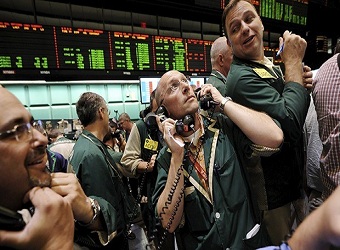U.S. stocks are headed for a 5 percent fall – at least – after suffering their biggest falls since the election of President Donald Trump, according to Dennis Gartman, editor and publisher of the Gartman Letter.
“This is the start of at least a 5 percent correction, and perhaps something far worse than that over time,” Gartman told CNBC Wednesday, after markets began to doubt the president’s pro-growth tax reform and stimulus policies during Tuesday’s session.
U.S. markets led the declines, with the benchmark S&P 500 index tumbling 1.2 percent Tuesday — and breaking a run of 109 trading days without a drop of 1 percent or more. The Dow Jones industrial average and the Nasdaq also suffered their biggest slumps of the year.
“I take this very seriously,” said Gartman, “This is not just a one off circumstance in the equities market.”
Alongside equities, base metals and crude oil posted lows while gold and bonds broke out to the upside, suggesting a wider shift in capital markets.
“I think there’s something to the downside that could be quite serious,” Gartman said. “Let us hope it’s merely a 5-7 percent correction and nothing more than that.”
A correction indicates a shorter and smaller downturn than a bear market, which usually refers to falls of around 20 percent over a two month period, or a recession, which refers to a prolonged downturn. However, a correction can be a precursor for both. UBS also predicted a correction for stocks on Tuesday, saying the fall could be closer to 10 percent.
“We’ve been saying that we expect a 5 to 10 percent correction. We’ve been saying that for weeks now,” Julian Emanuel, equity and derivatives strategist at UBS, wrote in an analyst note.
Gartman added that the outlook for earnings remains strong, however he urged caution.
“At the end of bull markets, earnings always look great. Earnings don’t look bad until you’ve gone somewhere into an economic downturn.”
“Earnings lag by at least a quarter, and usually by a half, so you’re going to get the best earnings right at the peak of economic activity.”
Source: CNBC


